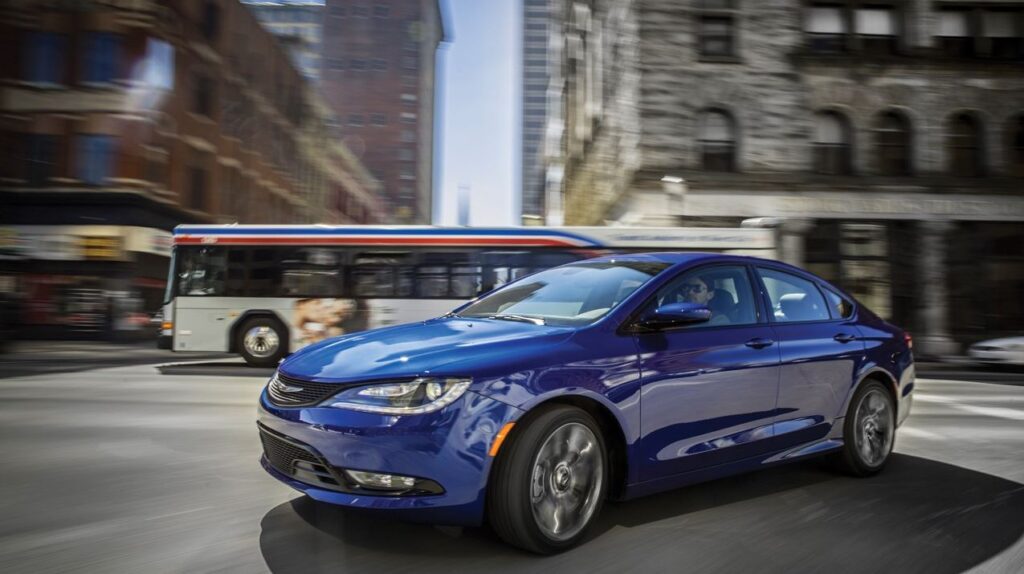Okay, it is not the end of the car as we know it, but we need to reduce our carbon footprint and dependence on combustion vehicles. Elon Musk (Founder, CEO of SpaceX, Tesla Inc. PayPal etc) wants you to get “electrified” by buying his slick upscale electric cars that will eventually drive themselves. Whether Tesla can deliver on mass production numbers and maintain good quality control is a good question. Every manufacturer has some version of BEV (all electric), PHEV (plugin hybrids) and alternative fuel car waiting in the wings. In order to lower greenhouse gases as set by Paris climate control treaty, we need to up the ante by banning gas combustion vehicles and turning to renewable energy. Besides “electrifying” passenger cars, we need to look at efficient more sustainable mass transit using clean renewable energy providers in order to reduce our carbon footprint.
Elon Musk and Tesla is leading the “charge”
Elon Musk has big dreams and may seem delusional and a bit eccentric at times, but most creative genius entrepreneurs fall into this camp. Not sure about colonizing Mars with Space-X program and starting a 3rd World war with killer robots powered by AI (artificial intelligence}. With fierce tension and imminent threat of North Korea lingering on our minds, a 3rd World War may be closer then we think. Luckily, Elon is focusing on heating up the electric car market with Tesla Inc. entering the affordable mainstream market with the Model 3. Like its predecessors, the Model S, Model X and the roadster, they are engineering marvels with minimalist, tasteful interiors, innovative modern technology and lots of torque. A Semi truck and heavy-duty pickup (look out Ford’s F-series!) is just around the corner. Despite the blunders in quality control (recalls) and missed production timelines, I believe Tesla will learn from its mistakes and continue to raise the bar. The big 3 auto manufacturers know how to scale and have been doing it longer. I am skeptical that Tesla aims to reach overall production targets of 500,000 vehicles in 2018, but I hope they prove me wrong. Elon Musk and Tesla have their work cut out for them. Now that Model 3 was officially unveiled and pre-orders are being filled, it will be interesting to see how they can ramp up production to deliver the vehicles in time.
Mass adoption of electric vehicles
Besides Tesla, other auto manufacturers, particularly Nissan (Leaf) and Chevrolet (Bolt EV) are making waves: they are competitively priced and they have more experience producing vehicles in larger numbers. I don’t believe they are “Tesla Killers” unless they can match the engineering prowess, battery range and offer better value in the lower end of the market. There are at least 35 electric or hybrid models already available from other manufacturers, with dozens of forthcoming models announced. Volvo, Chinese-owned Swedish manufacturer is aiming towards “electrifying” all their models in a gradual shift from fossil fuels to electric in 2019. Despite having a very small global market share, Volvo is setting an example for others to follow and hopefully will create a “ripple” effect. In order to achieve mass adoption, the cost of EVs must match gas combustion cars, but we need some help and cooperation from the city, all levels of government, private companies and industries.
Provide tax credits and incentives?
One way is to offset the cost of owning an EV by providing incentives, perks and government subsidies. Don’t be fooled! Electrics have fewer moving parts, but the cost of ownership especially with Tesla’s annual service plan is high. Ontario has been offering Electric Vehicle Charging Incentive Program (EVCIP) to support the purchase of eligible electric vehicles and promote car pooling. It is imperfect, but it is a great start. Ironically subsidies given out to oil and gas companies are much larger than those for electric cars. Lets persuade the federal government (Transport Canada) to provide tax credit, rebate or tax incentive: this would be the great way to convince Canadians to buy electric cars.
Global climate warming and Paris Treaty

Your battery-powered vehicle (BEV) is only as green as your electricity supplier. In a perfect world, most of the electricity would come from a mix of zero or low-carbon sources such as the sun, wind or nuclear reactors. This is one of the primary provisions of the Paris Climate Treaty: lowering the reduction of C02 and greenhouse gases. European countries are paving the way to use hydroelectric, wind energy instead of coal-burning (non-renewable power sources). Just have to look at Norway and the Netherlands for inspiration: many of its cities and towns boast bus-lane access for electric vehicles (EVs), plenty for recharging stations, privileged parking, and toll-free travel for electric cars. Norway wants to phase out fossil fuel-powered EVs by 2025. China have set targets to ban gas combustion vehicles by 2040. India, the world’s fifth-largest auto market, is readying for a stupendous transformation: moving completely towards electric vehicles (EVs) by 2030. Booming renewable energy production and rising use of cleaner vehicles may not be sufficient to meet the Paris Agreement. That is why it is critical that major polluting countries like U.S. led by Trump need to be on board.
What is Canada doing to reduce CO2 emissions?
Trudeau pledged 30% reduction of C02 gases for Canada by 2030. Is this realistic for Canada in which natural resources make up a large part of its economy? Yes, but this requires help from all levels of government, private and public sectors. Alberta’s economy is still rooted in the oil/gas patch so it will take time for consumers to abandon their “tried and true” gas combustion cars. Ontario phased out coal for energy production and has adopted a five-year Climate Change Action Plan. However, we need to do more collectively as a nation!
Building the infrastructure and supercharger network
Being an EV newbie, I learned that an electric car’s charger is found onboard the vehicle. The equipment buried in the guts of your EV is critical to converting the AC juice into DC (so your car’s battery pack can be charged). Okay, the wall-mounted box, cord and plug that supplies 240 volts of electricity and at least 30 amps is not really a “charger.” This is actually an EVSE (Electric Vehicle Service Equipment) which is needed when you are out and about with an EV with a limited battery range. Tesla with its Supercharger networks has a system of 480-volt fast-charging (EVSE) stations to allow long journeys.
Earlier this year, Norway opened the world’s largest fast-charging station, which can charge up to 28 vehicles in about half an hour. Amazing! The Sun Country Highway (Canadian private startup) is paving the road to creating Canada’s electric vehicle infrastructure. Their team managed to drive with their Tesla EVs on November 17th, 2012 from St. John’s, NL to Vancouver, B.C. to demonstrate the longest network of free EV charging stations in the world.Mass transit needs to evolve
Transportation is the largest source of carbon pollution in many provinces (Ontario) mostly from personal cars. Besides using electric passenger cars, we need to “electrify” mass vehicle fleets including rapid/light rail transit, trains, city and school buses. Commercial trains will likely have to run on diesel. But if diesel is so bad for air quality for powering cars, why is it OK for trains? In Edmonton, we are expanding our LRT (light rail transit) with the southeast leg of the 27 km Valley line, which will be completed by 2020. Increased ridership and expanded services hopefully mean less demand for cars and less congestion on the road.
Replacing diesel buses
Electric buses on the market today are good enough to run the whole day on just one charge so why can’t we all switch? In Ontario, the Electric School Bus Pilot Program (ESB Pilot) was launched as part of the Climate Change Initiative for the 2017-2018 school year. It is about time we revisit vehicles claiming to be “clean diesel” …. I would not want my daughter breathing those fumes! A worldwide diesel ban is spurred by the VW auto scandal or “diesel dupe.”

Edmonton could kick its diesel habit within 3 years: Edmonton’s first 40 electric buses will be delivered in early 2019 with more to follow to replace its existing 931-bus fleet. An electric bus’s range is nearly 500 kilometres, which means 20 hours of operation before a charge. In Vancouver, the regional transit authority rolled out a total of 26 new hybrid diesel-electric (New Flyer XDE60). With the new buses, TransLink will have a total of 252 hybrid buses in service in Metro Vancouver, plus 262 zero-emission trolley buses. That is really encouraging news!
Electric needs to be adopted in the mainstream
The world without the loud sounds or noxious smells that dominated the 20th century (industrial revolution) suddenly may become imaginable. Electric vehicles are making some headway and most auto manufacturers are producing some variants. Tesla Inc. made their mark in the premium upscale auto market and are making strides in the mainstream market with its Model 3. Just don’t count on Tesla’s Autopilot system until they refine and perfect it. If Elon Musk has his way, Tesla could virtually dominate the global EV market early in the next decade. But then again, don’t believe everything he says. Dozens of hybrids and electric vehicles are gunning for top position especially Chev Bolt EV and Nissan Leaf, but unfortunately, they make up a small part of the auto market. Private startups are providing electric vehicle infrastructure and paving the road for a clean, healthy future, but what about our federal government?
Governments needs to set deadlines and provide incentives
Promoting the adoption of clean energy transportation is needed with all levels of government, city, industry and private companies. The federal government needs emissions to come down (Paris Agreement), but it is passing the buck to its provinces and municipalities to implement their own policies. Mass transit fleets need to evolve as well. Perhaps federal tax credits, incentives and subsidies may convince consumers to go “electric?” British Columbia, Ontario and Quebec currently offer incentives to buyers of so-called zero-emission vehicles. In Europe, several countries have set aggressive deadlines for banning gas combustion cars. Pretty drastic, but something needs to happen to reduce our dependence on fossil-fueled cars. The end of the combustion car powered by fossil fuels may be near, but oil companies won’t give up without a fight. Interesting times ahead indeed.

